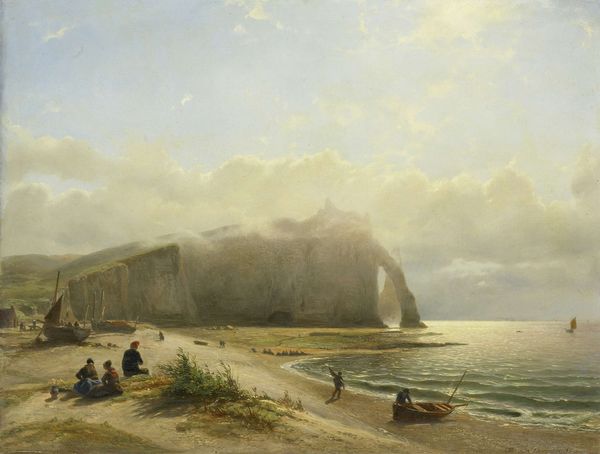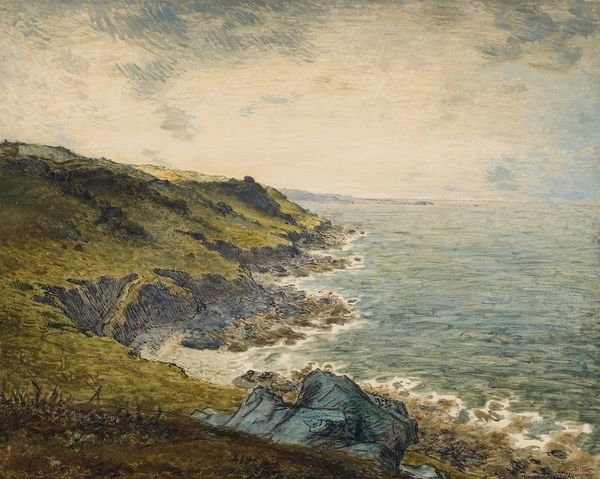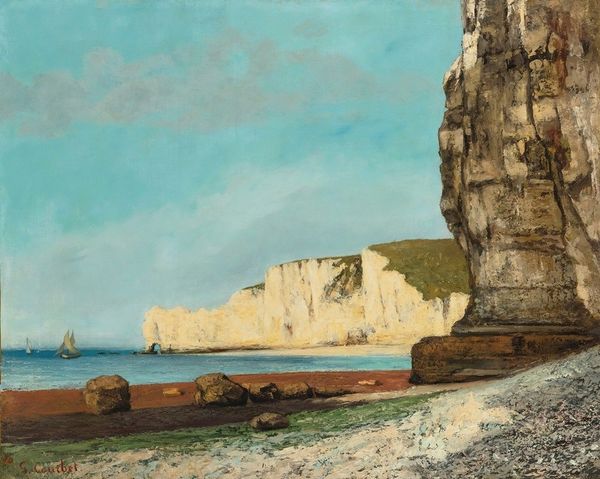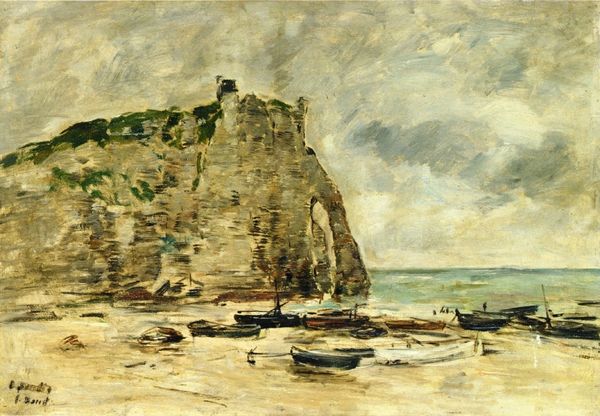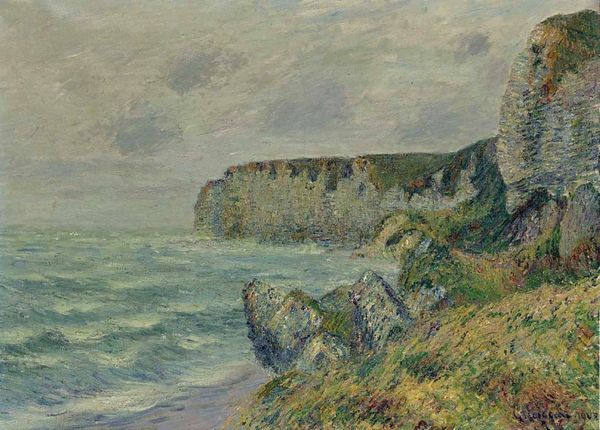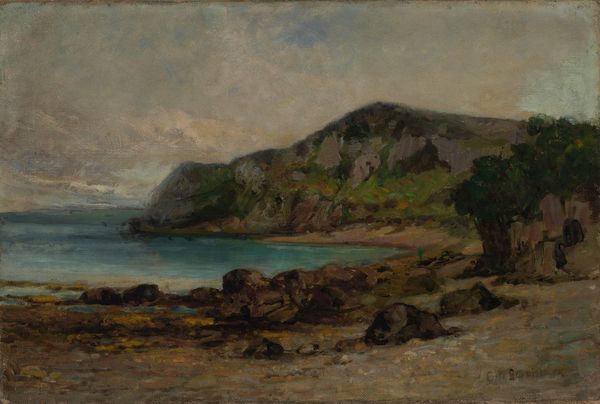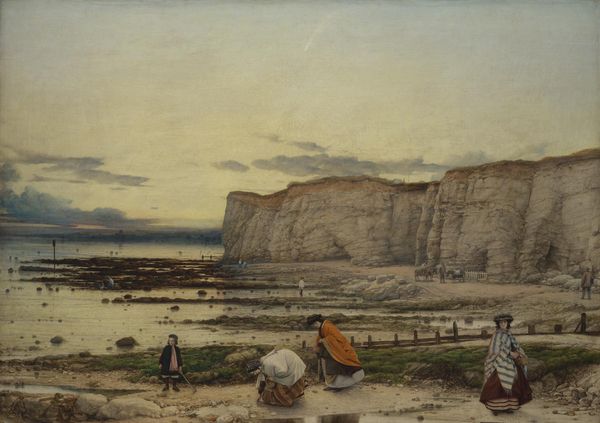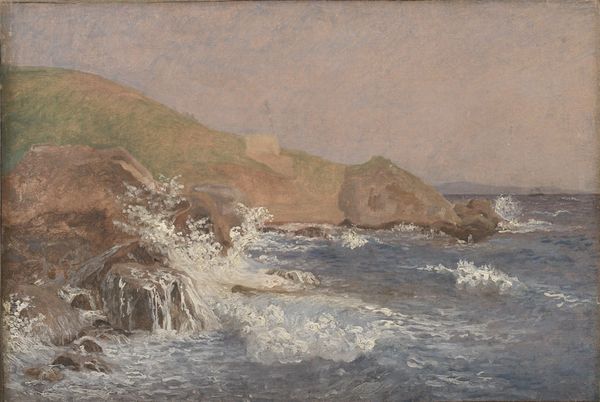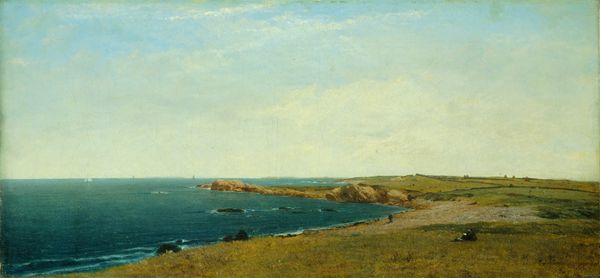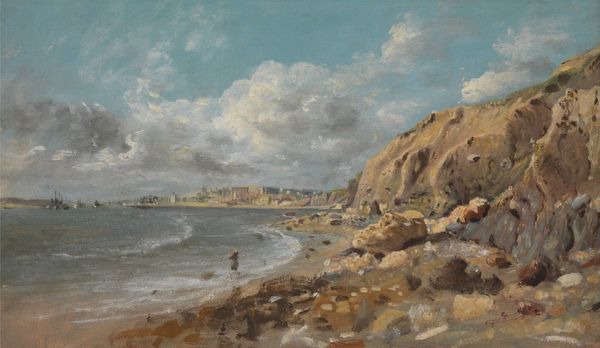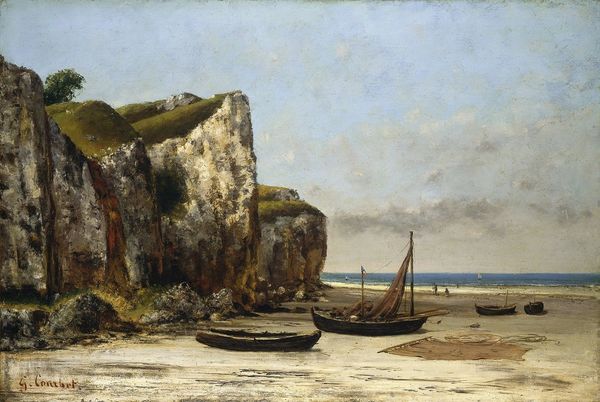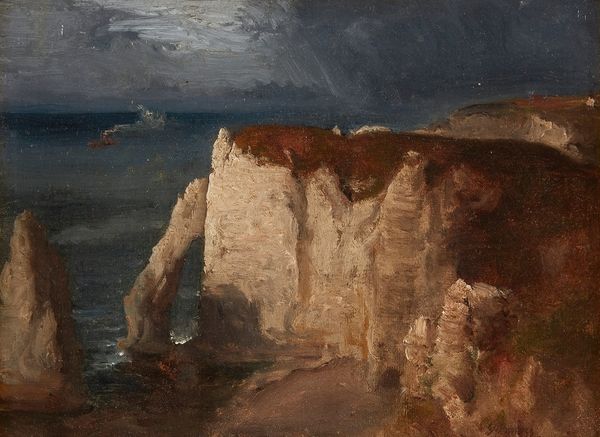
Copyright: Public Domain: Artvee
Gustave Courbet painted "The Etretat Cliffs after the Storm," a landscape of the French coast, sometime in the 1800s. Courbet, who was deeply engaged with the social and political issues of his time, developed Realism as a way to represent the lives and experiences of everyday people. Here, the cliffs of Étretat, with their imposing scale and rugged texture, evoke a sense of awe and the sublime. The dramatic contrast between light and shadow in this painting might be interpreted as a reflection of the turbulent times in which Courbet lived, marked by political upheaval and social change. Courbet’s choice to focus on the natural world can be seen as a way of grounding himself, and his viewers, in the face of uncertainty. "Painting is essentially a concrete art," Courbet once declared, "and can only consist in the representation of real and existing things." In its depiction of a landscape shaped by the forces of nature, the painting stands as a reminder of the power and fragility of our environment, and our place within it.
Comments
No comments
Be the first to comment and join the conversation on the ultimate creative platform.
